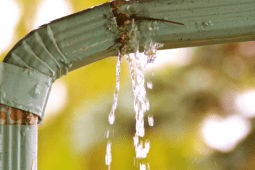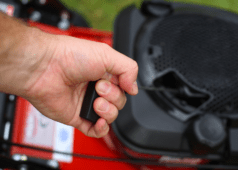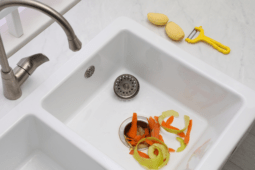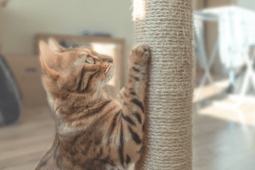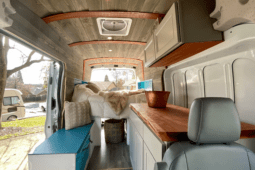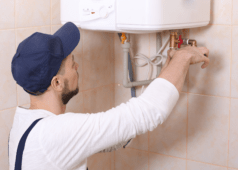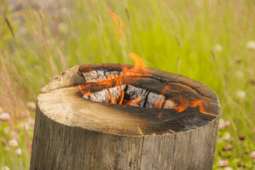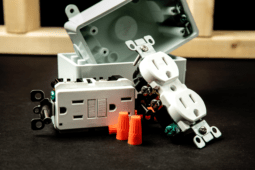How to Remove Wallpaper
Removing wallpaper can be an intimidating task, but it is an important one to know how to do it. Whether you are looking to update the look of your home or preparing to sell, knowing how to remove wallpaper can be a valuable skill. In this article, we will discuss the importance of knowing how to remove wallpaper, how to identify the type of wallpaper you have, the tools and items you will need for the project, how to prep for removal, the removal process, and clean up.
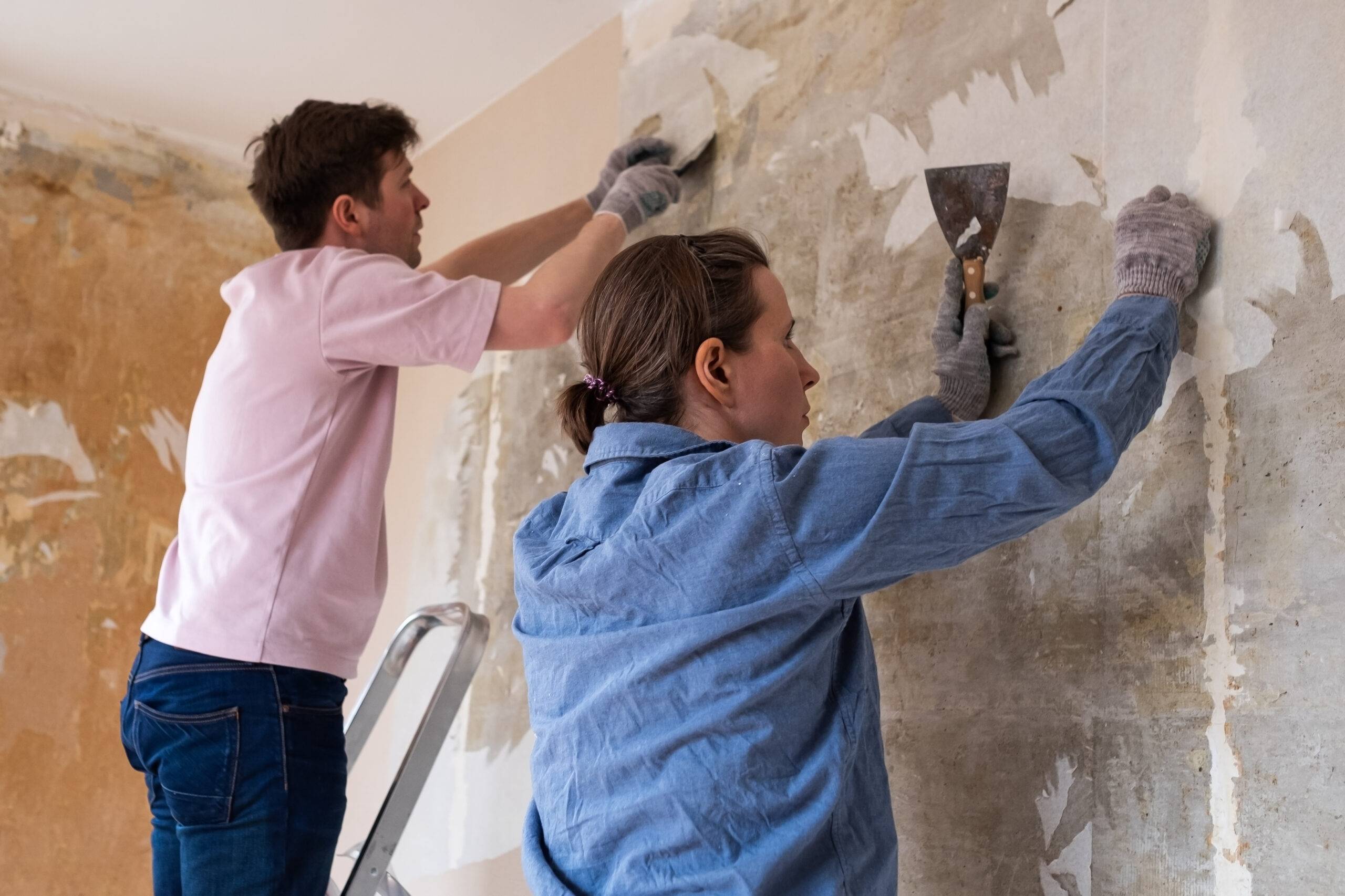
The Importance of Knowing How to Remove Wallpaper
Wallpaper removal is a crucial step in any home renovation or selling process. Removing outdated wallpaper can help modernize your home and make it more appealing to potential buyers. Additionally, removing wallpaper can help prevent damage to your walls caused by peeling or bubbling wallpaper. Knowing how to remove wallpaper can also save you money on hiring a professional.
Removing wallpaper may seem like a tedious and time-consuming task, but it is a crucial step if you want to give your walls a fresh new look. Wallpaper removal is important because it allows you to prepare your walls properly for the next layer of paint or wallpaper.
Removing old wallpaper can be a difficult task, especially if it has been on the walls for a long time. It can be a time-consuming process, but it is essential to ensure that your walls are ready for the next stage of the decoration. If you don’t remove the wallpaper properly, it can cause problems with the new wallpaper or paint you apply to the wall. You may end up with bubbles or wrinkles in the new layer, which will make your walls look unattractive.
Removing wallpaper also allows you to inspect the condition of your walls. You can check if there are any cracks or holes that need to be repaired before you apply new wallpaper or paint. If you don’t remove the wallpaper, you may miss these issues, and they can cause problems later on.
Removing wallpaper can also improve the air quality in your home. Old wallpaper can trap dust and allergens, which can cause problems for people with allergies or respiratory issues. By removing the wallpaper, you can improve the air quality in your home and make it a healthier place to live.
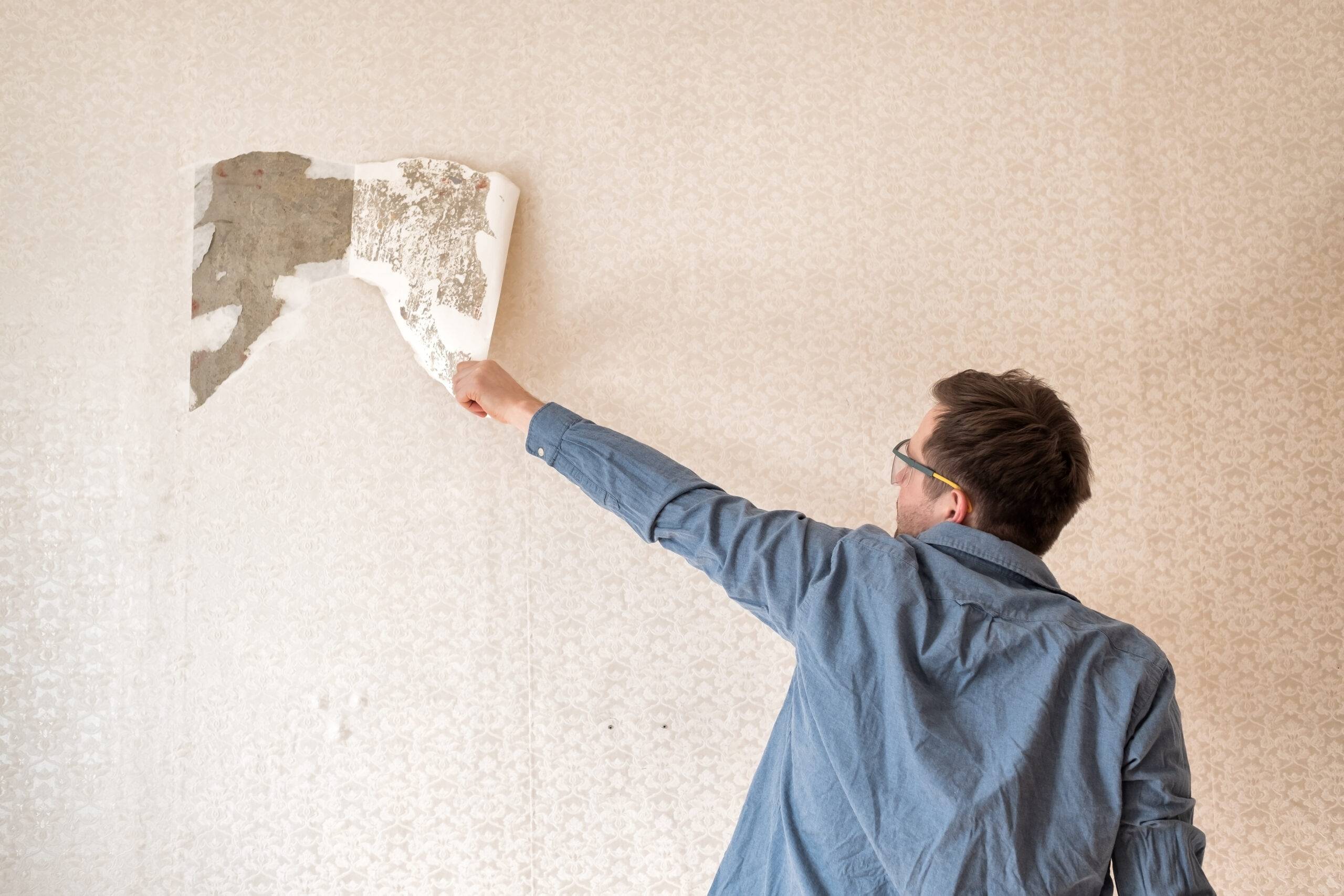
Identifying Wallpaper Types
Before beginning the removal process, you must first identify the type of wallpaper you are dealing with. There are several types of wallpaper, including vinyl, paper, fabric-backed, and more. You can typically identify the type of wallpaper you have by examining the seams and edges. Vinyl wallpaper typically has visible seams and edges, while paper wallpaper has less noticeable seams and edges.
Identifying the type of wallpaper on your walls is important, as it will help you determine how to properly clean and remove it. Here’s a step-by-step guide on how to identify what type of wallpaper you have:
Step 1: Determine the age of the wallpaper
The age of your wallpaper can be a good indicator of what type it is. If your wallpaper is over 50 years old, it’s likely made of paper. If it’s between 50-20 years old, it could be made of vinyl or fabric. If it’s less than 20 years old, it’s likely made of vinyl.
Step 2: Look at the texture and pattern
The texture and pattern of your wallpaper can also give you clues as to what type it is. Paper wallpaper is often smooth and has a printed pattern. Vinyl wallpaper has a textured surface and can be embossed with a pattern. Fabric wallpaper has a woven texture and can have a printed or embossed pattern.
Step 3: Check for a vinyl coating
If your wallpaper has a vinyl coating, it’s likely made of vinyl. You can check for a vinyl coating by wetting a sponge and rubbing it gently on the wallpaper. If the water beads up and doesn’t soak in, it’s likely vinyl.
Step 4: Check for a fabric backing
If your wallpaper has a fabric backing, it’s likely made of fabric. You can check for a fabric backing by peeling back a corner of the wallpaper and looking for a woven fabric layer.
Step 5: Look for manufacturer information
If you’re still unsure about the type of wallpaper you have, look for manufacturer information on the back of the wallpaper or in the installation instructions. This can give you more information about the type of wallpaper and how to care for it.
By following these steps, you should be able to identify the type of wallpaper on your walls and take the appropriate steps to clean or remove it. Remember to always be careful when cleaning or removing wallpaper, and if you’re unsure about what to do, consult a professional.
Tools and Items Needed for the Project
Once you have identified the type of wallpaper you have, you can begin gathering the tools and items needed for the project. You will need a wallpaper-scoring tool, a wallpaper removal solution, a spray bottle, a scraper or putty knife, sandpaper, a sponge, and a drop cloth. It is important to have all of these items on hand before beginning the removal process.
Prepping for Removal
Before beginning the removal process, you must prepare the room. Start by removing all furniture and wall decorations from the room. Cover the floors with a drop cloth to protect them from any wallpaper removal solution or debris. It is also important to turn off the power to any electrical outlets in the room to prevent any accidents.
Removal Process
To begin the removal process, start by scoring the wallpaper with a wallpaper scoring tool. This will create small holes in the wallpaper, allowing the removal solution to penetrate the adhesive. Next, mix the wallpaper removal solution with water in a spray bottle according to the manufacturer’s instructions. Spray the solution onto the wallpaper, making sure to saturate it completely. Allow the solution to sit for the recommended amount of time, typically 10-15 minutes.
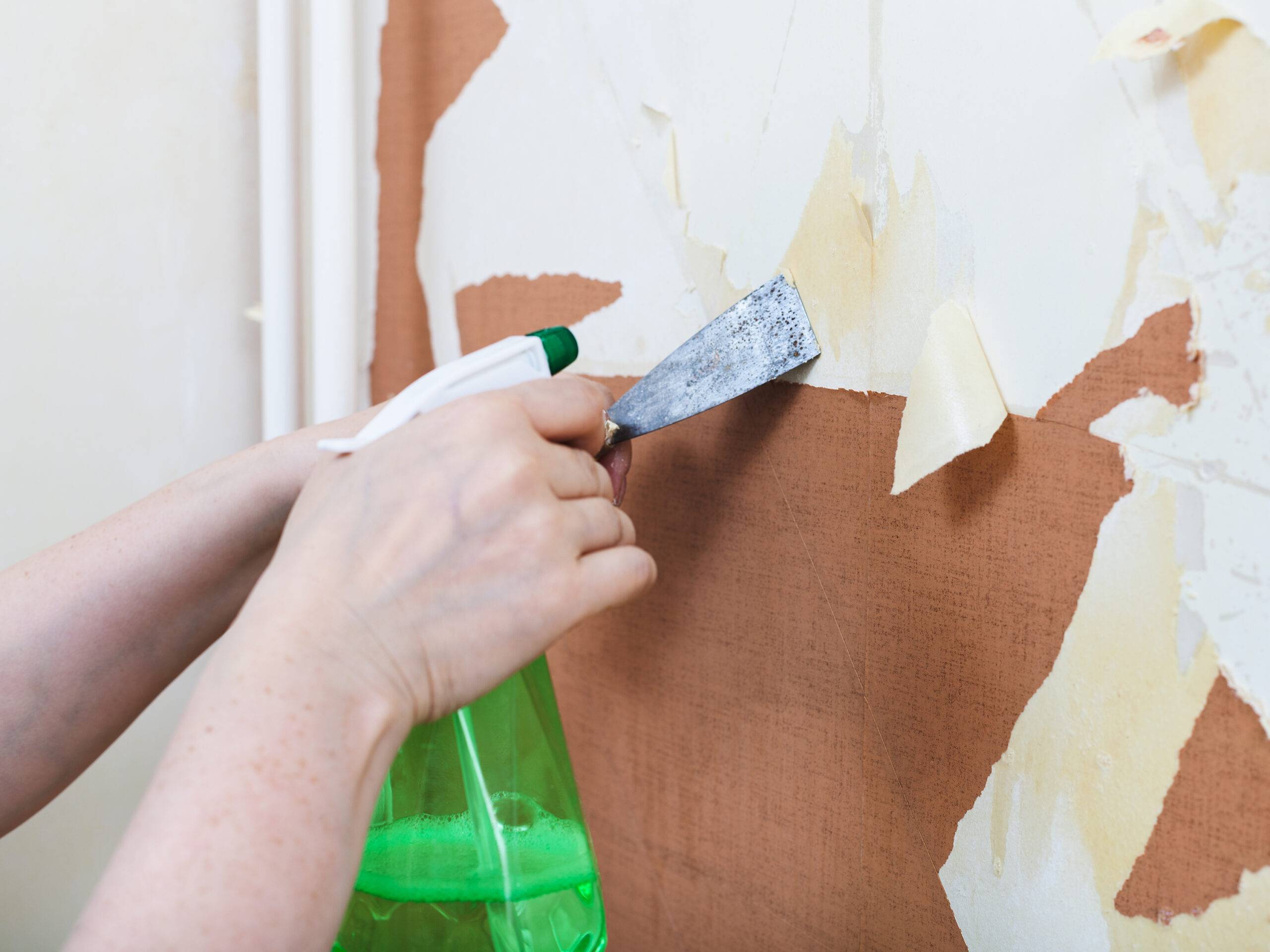
After the solution has had time to penetrate the adhesive, use a scraper or putty knife to gently peel the wallpaper away from the wall. Be careful not to damage the wall underneath. If the wallpaper is particularly stubborn, you may need to use sandpaper to remove any remaining adhesive.
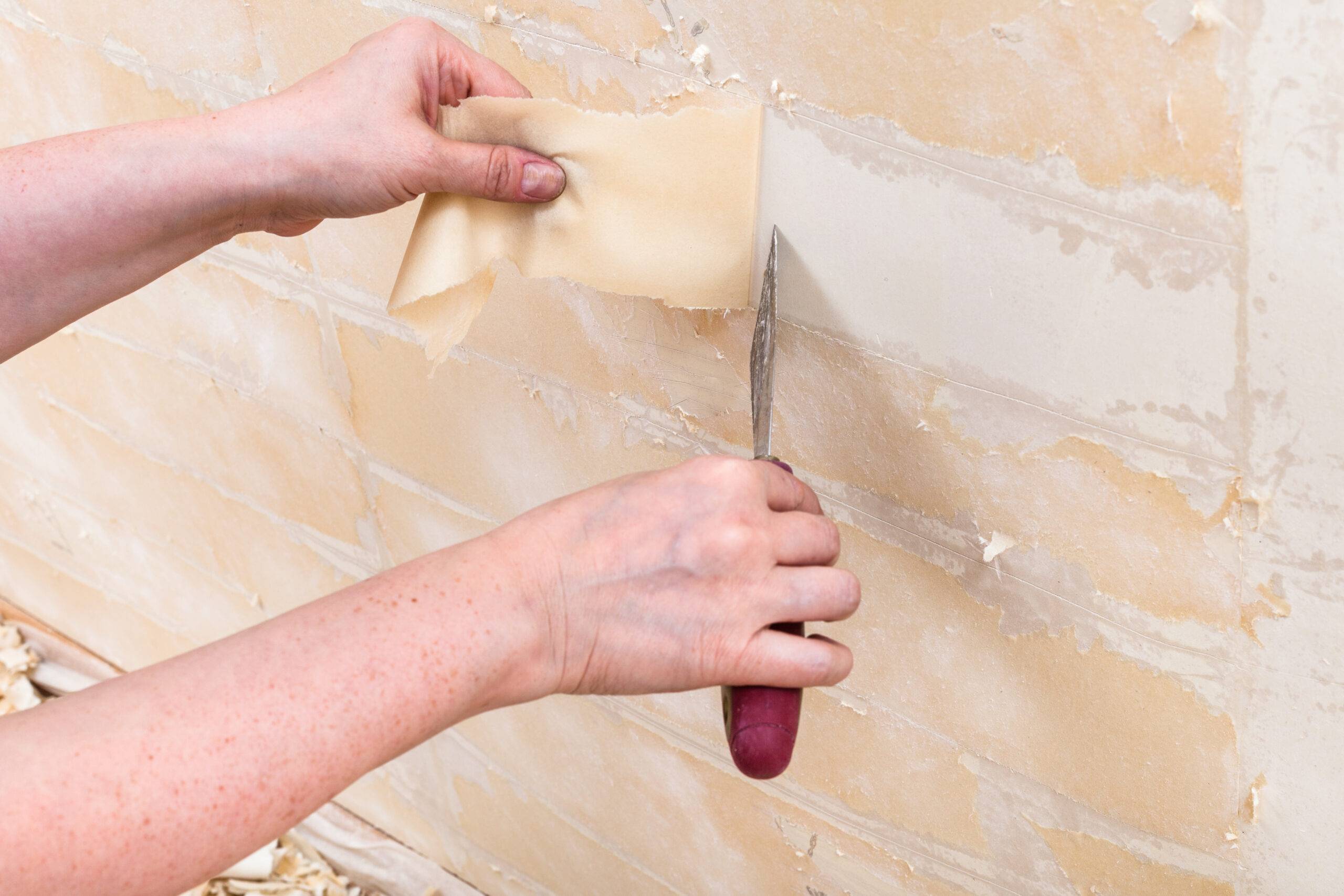
Quick Tips and Tricks
- Start by removing any loose wallpaper with a putty knife or scraper.
- Use a wallpaper scoring tool to create small holes in the wallpaper, which will help the wallpaper removal solution penetrate.
- Mix hot water and a wallpaper removal solution according to the manufacturer’s instructions.
- Apply the solution to the wallpaper using a sponge or spray bottle.
- Let the solution soak into the wallpaper for 10-15 minutes.
- Use a scraper to remove the wallpaper from the wall. Start at the top and work your way down.
- If the wallpaper is not coming off easily, apply more solution and let it soak in for a few more minutes.
- Use a steamer to remove stubborn wallpaper. Hold the steamer against the wallpaper for 30 seconds or so, then scrape it off.
- Use a wallpaper removal tool to remove any remaining wallpaper glue or residue.
- Finally, wash the walls with soapy water to remove any remaining wallpaper glue or solution.
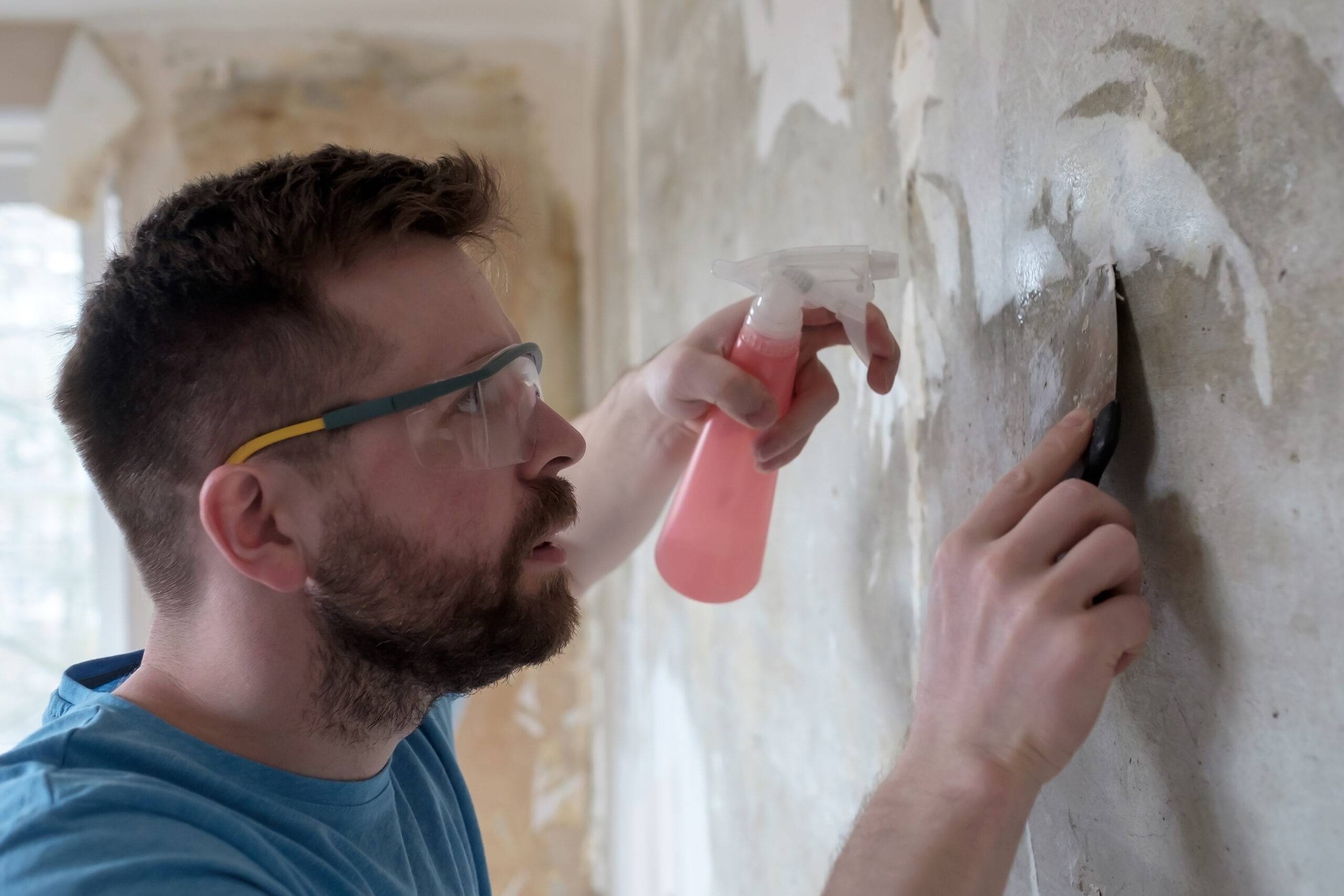
Clean Up
Once all of the wallpaper has been removed, it is important to clean up any remaining debris. Use a sponge and warm water to wipe down the walls and remove any remaining adhesive. Allow the walls to dry completely before painting or applying any new wallpaper.
In conclusion, removing wallpaper may seem like a daunting task, but it is an important skill to have. Knowing how to remove wallpaper can save you money and help modernize your home. By following these steps, you can easily remove wallpaper from any room in your home.
Frequently Asked Questions (FAQs)
What tools do I need to remove wallpaper?
You will need a wallpaper scorer, a putty knife, a wallpaper steamer, a scraper, a bucket, warm water, and a sponge.
How do I know if I need to remove the wallpaper or just paint over it?
If the wallpaper is peeling, has bubbles or tears, or is outdated, it’s best to remove it before painting. If the wallpaper is in good condition and you like the pattern, you can paint over it with a primer specifically designed for wallpaper.
Can I remove wallpaper without a steamer?
Yes, you can use warm water and a wallpaper remover solution to soften the adhesive and scrape the wallpaper off with a scraper.
How do I protect my floors and furniture when removing wallpaper?
Lay down a drop cloth or old towels on the floor and move furniture out of the way. Cover any remaining furniture with plastic sheeting or old towels.
How do I remove stubborn wallpaper glue residue?
Mix warm water and vinegar in a bucket and use a sponge to apply the solution to the glue residue. Let it sit for a few minutes, then scrape it off with a scraper or putty knife.
What if the wallpaper is covering multiple layers of wallpaper?
You will need to remove each layer of wallpaper separately using a steamer or wallpaper remover solution.
How long does it take to remove wallpaper?
The time it takes to remove wallpaper depends on the size of the room and the type of wallpaper. It can take anywhere from a few hours to a few days.

